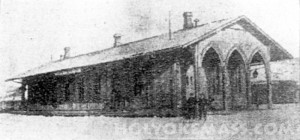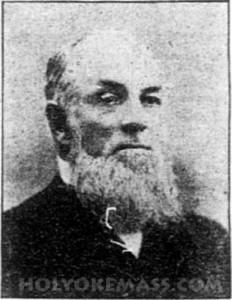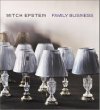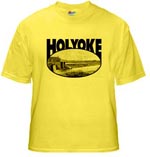by Laurel | May 14th, 2012
11 May 1902
W. W. Ward’s Reminiscences
Concerning Early Railroading Up the Valley — City Affairs.
The face of William W. Ward, station agent of the Boston and Maine railroad at Holyoke, with its patriarchal white beard has been so long familiar that the regular day patron of the road would not feel that all was just right if a stranger appeared at the ticket window. the old Connecticut River railroad and Mr. Ward became acquainted about 1849, when he went to work in the freight house at Northampton. Dome two or three years after Josiah Hunt, then superintendent of the road, came up there and said to the freight agent, “I wonder if Ward will go to Holyoke. I want him for the ticket agent down there.” “I guess so, ask him,” was the reply. So with the promise of an additional “raise” in salary, Mr. Ward came down and began to sell tickets in the old wooden station that had then been built but a year or two, and was considered quite sumptuous. It is now being used or the less dignified, if wholly honorable, career of a blacksmith shop, and also as a sort of advertising billboard on Main Street. Passengers on the trolley cars often notice it, and recognize it as a former railroad station.
Some ideal of the vast magnitude of the travel can be gleaned by the reports of about that time. One one day in February, not Sunday, the following ticket sales were reported: Springfield 18, Cabot (Chicopee) six, Northampton three, Greenfield one,. This must not be taken as a fair sample, however, as the receipts were often more than that, and a glance at the accounts of 1849 shows that the sales increased from month to month. One month, March 1849, the total sales were $344; but Mr. Ward has seen the time when the monthly sales amounted to $17,000 in recent years. Mr. Ward succeeded H. D. Carroll of this city, who is still living, and who doubtless remembers plainly the little old shanty — it hardly could be called a station — that preceded the new structure that was built shortly before Mr. Ward’s arrival. There were then but few trains a day, the engines were all wood-burners, with the great stacks , inside cylinders, and rain between Holyoke and Springfield in perhaps half an hour. There was then but a single track, and the double track did not come until a number of years after.
Tickets were sold only for points on the Connecticut River line. They were printed on plain white cardboard, and were kept n a tin trunk that was sent once in so often to the headquarters in Northampton, and a fresh supply of tickets returned. The road only extended to Greenfield, and at first there were first and second-class fare to your city from Holyoke, and from Holyoke to Northampton, was 25 cents; from Holyoke to Cabot, 15 cents; from Holyoke to Greenfield, 65 cents. In spite of the light engines and cars and road-bed, there have been few accidents on the line. Once in Deerfield a train ran down a kindly cow that was looking along the track for iron spikes to improve her digestion, and it promptly left that track in disgust, and tied itself up into a Cupid’s know. It took all the profits for several months to pay for that accident. Another time the ponderous engine “Whatley,” which must have weighed as much as 20 tons, and which any yard “switcher” of today would butt off the track with supreme contempt, fell into a washout a little above the sawmill. It was a time of high water, and the track was submerged and the “Whatley” was moving along when all of a sudden it dived down into 10 feet of water. It remained there, an interesting object lesson in navigation and a fine attraction for the citizens until three of four other 20-ton engines had joined their might together and yanked the offender back to rather drunken dignity upon the rails. Mr. Ward has some excel;lent pictures of this old wreck.
When Mr. Ward began selling tickets the greater part of Holyoke was a “howling wilderness.” The Holyoke house now the Hamilton had been erected and parsons hall across. The Lyman company had one or two mills, but elsewhere around but one or two small buildings were extant. The foundations were then being laid for the cotton mill which is now used by D. Mackintosh Sons. The 40 years that followed saw continual building and change. the Holyoke street railway company was represented by one horse car to a line that ran from the railroad station to the Holyoke Paper Mill. President Loomis and the Northampton board of aldermen had then not met and Mountain Park had not been evolved. the streets were sandy and dirt roads and the canals themselves had hardly been constructed and extended but a small fragment of the distance they now extend. This station stood a little south of where the bridge over the tracks at the foot of Dwight Street stands. Its Gothic design is not uncommon in some part of New England yet.
Adapted from The Springfield Republican.










